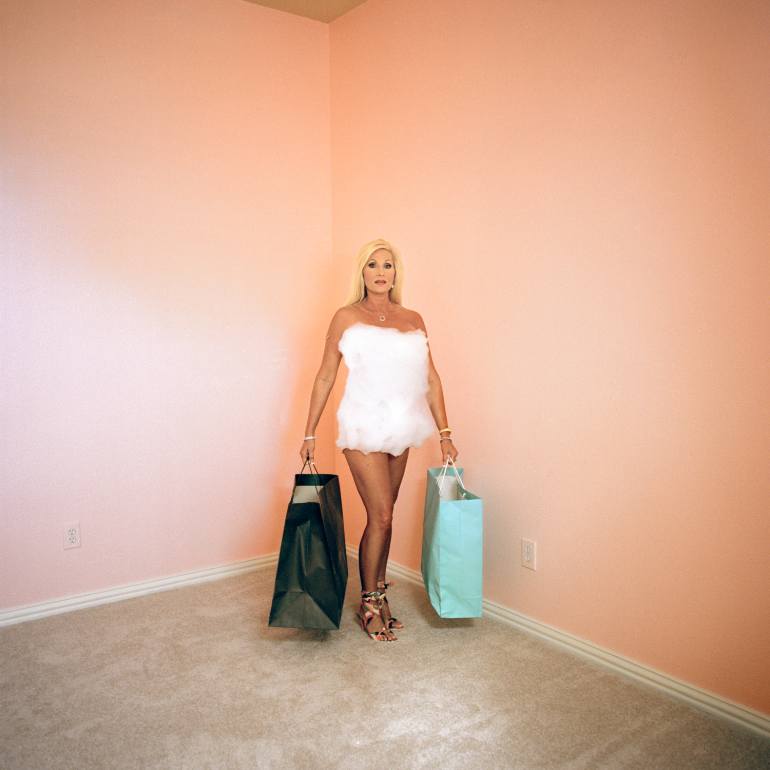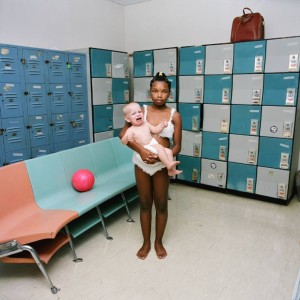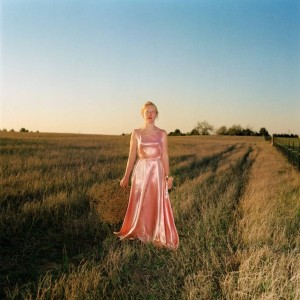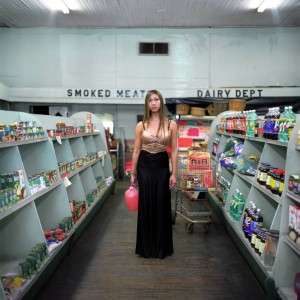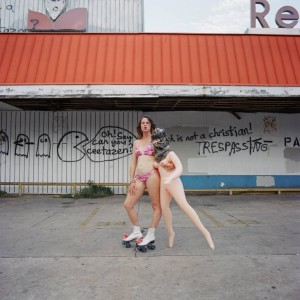Art We Love
The Language of Reality: An Interview with Photographer Denise Prince
Discover some of the art that’s catching our eye lately. In this series, we’ll bring you the stories behind some of today’s most fascinating works of art, straight from the mouths of their creators.
Through her photographic work, artist Denise Prince explores the chasm between projections of reality and actual experience, illustrating narratives reminiscent of the advertisements that surround us.
Denise’s photographs of suburban women recall John Berger’s seminal 1972 text Ways of Seeing, which explores the extent to which perceptions of visual culture are filtered through our environment—the assimilation of what is physically seen then transformed into a verbal language through which we interpret and understand it. We learn to see before we learn to speak, Berger says, which has led to an unsettling understanding of gender particularly, based on images depicting conventions ascribed to men and women. To interpret an applied cause and effect of this concept, consider that throughout the centuries most Western images of the female form were communicated via artworks painted by men.
Through her lens, Denise aims to break down and reconstruct perceived notions of ‘human as object’ that are often communicated in commercial and marketing images, devoid of context and individual nuance. Similar to ideas expressed in Ways of Seeing, Denise’s female subjects grapple with standardized objectification, which she portrays by re-appropriating a language understood through widely disseminated images absorbed from a young age into pernicious ideals of women in society. The fantastical world of her photographic series Things I Never Told You plays with semiotics—the study of signs and symbols and how they are used to construct meaning—through the use of props and artificial environments to delineate what is real from what is suggested.
Read our Q&A with Denise below, in which she discusses her work.
“Preparing for Miss Chanel Lee”
From the outside, the subjects of Things I Never Told You appear to exist in worlds very different from each other, united rather by a pervasive feeling of melancholy and displacement. As you peel back the layers, however, each woman is weighed down by a unique possession— an apple, a child, a corsage— and is outfitted in posh clothes not inherent to their environments. How did this approach help to convey the message of the series?
I think the displacement you sense comes from my interest in the individual as singular and signifier at the same time. Humans communicate as objects but our inner worlds are particular and nuanced. Novelistic, if you will. This work allows me the opportunity to suggest narrative and also disrupt it by bringing in greater complexity and by mixing signs. By combining props, locations, and clothing that take some moments to interpret, I am able to point to the act of constructing meaning, to subtly point out that fantasy organizes our experience of everyday reality and tells us who we are. It is the common thread throughout my art practice. Each body of work points to the subjectivity of the viewer. It’s as if I’ve attempted to mix the symbols in an advertisement so that it’s clear what’s being presented are symbols, distinct from the way life is experienced. Hopefully, the effect is pleasing, like opening a novel to a random page and wondering what’s gotten us to this point.
A narrative this series appears to convey is a displeasure in domesticity, hinting at ideas of Second Wave Feminism. How much did you consider the aspect of female in society, and did you aim to disrupt it?
Advertisements (particularly billboards) stood out to me during the latency period of my development (which, I believe, coincides with the onset of puberty). They felt like a provocation. Many seemed to be saying that women were objects of sexual desire, yet everyone pretended this aspect wasn’t explicit. No one seemed to take any notice of the overt sexuality at all. Remember, I was not yet a woman and so I found them troubling if they indicated what lay ahead. I wanted to be experienced as or appreciated as “me,” and not as an object. I didn’t realize it was fundamental to the human condition to read ourselves and others as objects. I didn’t realize that we communicated within certain fundamental limits of language (for instance, that language cannot account for real, certain senses and sensations). This series was a place I could express a language that resembled the commercial language I found compelling that also reflected the more complex inner experience of life as a woman.
Each image from Things I Never Told You feels like a documentation of an intimate story. Did you feel a sense of cosmic responsibility in conveying the message of this series?
I am compelled to speak about things that are often unsaid, and so cosmic responsibility is fitting. People ask me occasionally what individual works mean. When this happens I turn the question to them. I wonder what they think it means. Without fail, the person begins to communicate either aspects I had considered when constructing the concept or through conveying subtle, elegant personal experiences. Intimate, as you say. So, in other words, they always were getting it exactly right.

